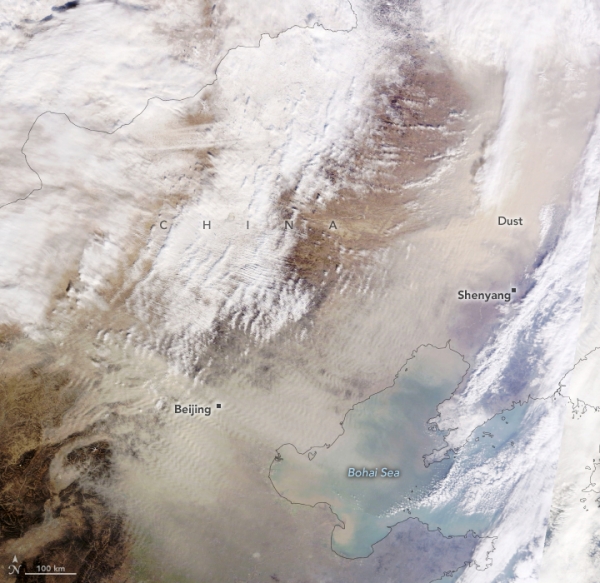On December 12, 2022, waves of sand and dust streamed over northern China, degrading air quality in several cities.
Airborne particulate matter from the storm created hazardous air conditions in Beijing and surrounding areas. At the U.S. Embassy in Beijing, the air quality index for fine particulate matter (PM2.5) exceeded 300, which is considered hazardous to human health. Air quality measurements by the Beijing Environmental Protection Monitoring Center for PM10 (larger dust particles) reached 999—the maximum threshold for the indicator. Beijing residents were warned to stay inside, according to news reports.
These two images above were acquired on December 12, 2022, with the Moderate Resolution Imaging Spectroradiometer (MODIS) on NASA’s Terra satellite. The false-color image on the left incorporates infrared wavelengths to help distinguish between clouds (shown in white), snow (blue), and sand and dust (brown). The true-color image on the right shows plumes of sand and dust from the Gobi Desert spanning parts of Hebei, Shanxi, Liáoníng, and Jílín provinces.
Read more at: NASA Earth Observatory
Photo Credit: NASA Earth Observatory/Lauren Dauphin


